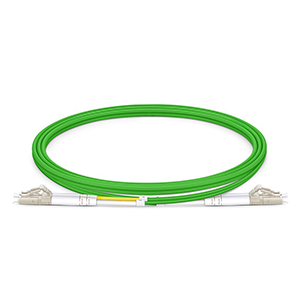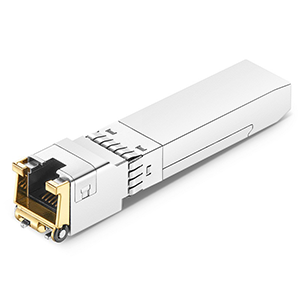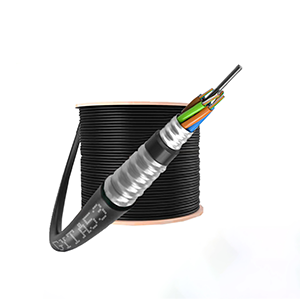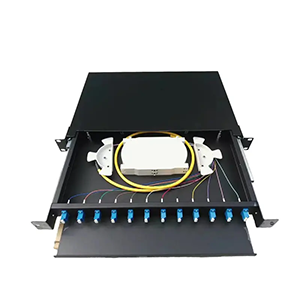Fiber connection quality plays a key role in network performance. This article will explore how to use LC pigtails to improve network connections. We will first define the basic structure and function of LC pigtails and explain how it is different from other fiber connection methods. Next, we will analyze the advantages of LC pigtails in network applications, including low loss and high reliability, simple and fast installation, compact and durable structure, wide compatibility, and excellent optical performance.
Then, we will detail the specific steps of using LC pigtails in network deployment and explain how each step helps improve network connection quality. Finally, we will analyze the use cases of LC pigtails in different application scenarios such as data centers and enterprise networks, and explain how LC pigtails can play their advantages in various applications.
The definition and characteristics of LC pigtails
Let me introduce you to the definition and characteristics of LC pigtails:
The definition of LC pigtails:
- LC pigtails are a commonly used fiber optic connection method
- It consists of three parts: optical fiber, optical fiber connector and optical fiber connector
- Among them, the optical fiber connector adopts LC type connector, which is also the source of its name
The main features of LC pigtails:
- Miniaturized design: LC connectors are smaller and more compact than traditional ST and SC connectors
- Easy to connect and operate: LC connectors adopt plug-in design, which is easy to install and disassemble
- Stable performance Reliable: LC connector has good optical properties and durability
- Wide application scenarios: LC pigtails are widely used in fiber optic communications, data centers and other fields
Differences between LC pigtails and other connection methods:
- Compared with connectors such as ST/SC, LC connectors are smaller in size and more suitable for dense wiring
- Different from right-angle connectors such as FC and SC, LC adopts an angled design and occupies less space
- The overall structure of LC pigtails is more compact and more suitable for narrow installation environments
In short, LC pigtails are a compact, easy-to-operate, and stable fiber connection method, which is widely used in various fiber optic communication systems and is an important part of realizing fiber optic network wiring.
LC pigtail advantages in network applications
Let me introduce the advantages of LC pigtail in network applications in detail:
Low loss and high reliability:
- LC pigtail adopts precise optical design and manufacturing process
- It can provide excellent optical performance, with optical loss less than 0.2dB
- The interface connection is stable and reliable, with reliability higher than 10,000 plug-in and pull-out times</li >
Simple and fast installation:
- LC connector adopts convenient plug-in design, which is very convenient to install and remove
- No special tools are required, and it can be easily completed by ordinary operators
- Greatly improves the efficiency of on-site wiring
Compact and durable structure:
- LC connector is small in size, takes up less space, and is conducive to dense
- Metal shell and ceramic ferrule design, providing good mechanical strength
- Can adapt to harsh working environment, with strong pressure resistance
Wide compatibility:
- LC pigtail is widely compatible with various fiber optic equipment and systems
- Can be seamlessly connected with optical modules such as SFP, SFP+
- Can also be interconnected with other connectors such as ST, SC
Excellent optical performance:
- LC pigtail adopts high-precision optical design and manufacturing
- Can provide excellent optical indicators such as low optical loss and high return loss
- Ensure that the optical signal maintains good quality during transmission
In short, LC pigtails are widely used in various fiber optic networks with their many advantages, which helps to improve the transmission performance and reliability of the network.
Steps to improve network connection quality using LC pigtails
Let me introduce you in detail the specific steps of how to use LC pigtails to improve connection quality in network deployment:
Choose the appropriate LC pigtail:
- Choose the LC pigtail that meets the requirements according to the required fiber type, length and other parameters
- Ensure that the optical performance indicators of the LC pigtail can meet the needs of the network system
- Choose high-quality and reliable LC Pigtails help improve the overall connection quality
Safely clean the fiber interface:
- Before connecting the LC pigtail, carefully clean the fiber interface surface
- Remove dust, oil stains and other contaminants on the interface
- Ensuring that the interface is clean and intact will help improve the optical loss performance of the connection
Carefully connect the LC pigtail:
- Align the fiber connector of the LC pigtail with the device
- Push gently until you hear a “click” sound, indicating that the connection is in place
- Avoid excessive force to prevent damage to the interface and connector
Fix the LC pigtail to prevent loosening:
- Use appropriate fixing methods to securely fix the LC pigtail in place
- Prevent the LC pigtail from moving or vibrating during operation
- Stable connection helps To maintain the optical performance of the connection
Regularly check and maintain LC pigtails:
- Regularly check the physical state and optical performance of the LC pigtail
- Clean the interface and replace damaged LC pigtails
- Keep the LC pigtail in good working condition
Through the strict implementation of the above steps, it can ensure that the LC pigtail performs at its best in network deployment and improve the quality and reliability of the entire network connection.
LC pigtail use cases in different network applications
Let me introduce you to the use cases and advantages of LC pigtails in different network application scenarios:
Data center applications:
- Data center networks have dense wiring and high requirements for space and mechanical strength
- LC pigtails are compact and small, which is very suitable for dense wiring in data centers
- Its excellent optical performance can ensure the quality of high-bandwidth optical transmission
- The simple and easy-to-operate features also help improve the maintenance efficiency of the data center
Enterprise campus network applications:
- Enterprise campus networks need to be wired between different buildings and office areas
- LC pigtails are lightweight and flexible, suitable for various complex installation environments
- Its reliability and anti-interference capabilities can ensure the stable operation of enterprise networks
- At the same time, the cost of LC pigtails is relatively low, which is conducive to controlling project investment
Telecom operator network applications:
- Telecom backbone network uses high-density optical transmission technologies such as DWDM
- LC pigtails are compact and convenient for wiring in equipment cabinets
- Its low loss performance can reduce the power budget pressure of DWDM systems
- Good optical indicators also help improve DWDM transmission capacity
Wireless base station backhaul applications:
- 5G and other wireless base stations need to use optical
- LC pigtails are lightweight and flexible, suitable for wiring in base station environments
- Its excellent mechanical strength and environmental interference resistance are critical
- Easy installation also helps simplify the deployment process of base stations
In short, LC pigtails are widely used in various network scenarios such as data centers, enterprise parks, telecom operator backbone networks, and 5G wireless base stations due to their compact structure, high-performance optical characteristics, and ease of use, playing an important role in improving network connection quality.
Summary
Fiber connection quality is the key to building a high-performance network. Our company focuses on the research and development and production of optical communication products and solutions, and has rich experience in LC pigtail applications. We provide various high-performance LC pigtail products to meet your needs in different scenarios such as data centers and enterprise networks. Our LC pigtails are made of high-quality materials and precision manufacturing processes, with excellent optical performance and reliability.
At the same time, our team of engineers will provide you with professional usage guidance and installation services to ensure that the LC pigtail plays the best role in network deployment. Contact us now to learn more. We will do our best to provide you with the best quality products and services.
LC Pigtail FAQ
An LC Pigtail is a short length of fiber optic cable terminated with an LC connector on one end, used to connect fiber optic equipment or components to a fiber optic network or system.
LC Pigtails provide a convenient and standardized method for connecting fiber optic devices, such as transceivers, attenuators, or couplers, to the main fiber optic infrastructure, enabling quick and reliable connections.
LC Pigtails are widely used in a variety of fiber optic communication systems, including data centers, telecommunications networks, and test and measurement equipment, where a flexible and easily connectable fiber interface is required.
LC Pigtails are available in both single-mode and multimode fiber optic cable types, with different core/cladding sizes and optical characteristics to suit different application requirements.
LC Pigtails are typically available in short lengths, ranging from a few inches to a few feet, allowing for convenient and compact connections between fiber optic components.
Proper cleaning of the LC connector end face using approved fiber optic cleaning techniques is crucial to ensure optimal performance and prevent contamination-related issues.
The LC connector’s small form factor, push-pull coupling mechanism, and standardized interface make LC Pigtails a popular choice for high-density fiber optic applications.
Careful handling, connector mating, and strain relief management are important to ensure a secure and reliable fiber optic connection when using LC Pigtails.
Key factors include the insertion loss, return loss, and durability of the LC connector, as well as the overall integrity and reliability of the fiber optic cable assembly.
As fiber optic networks continue to evolve, advancements in LC Pigtail design, materials, and manufacturing processes are expected to improve performance, cost-effectiveness, and integration with next-generation fiber optic systems.





